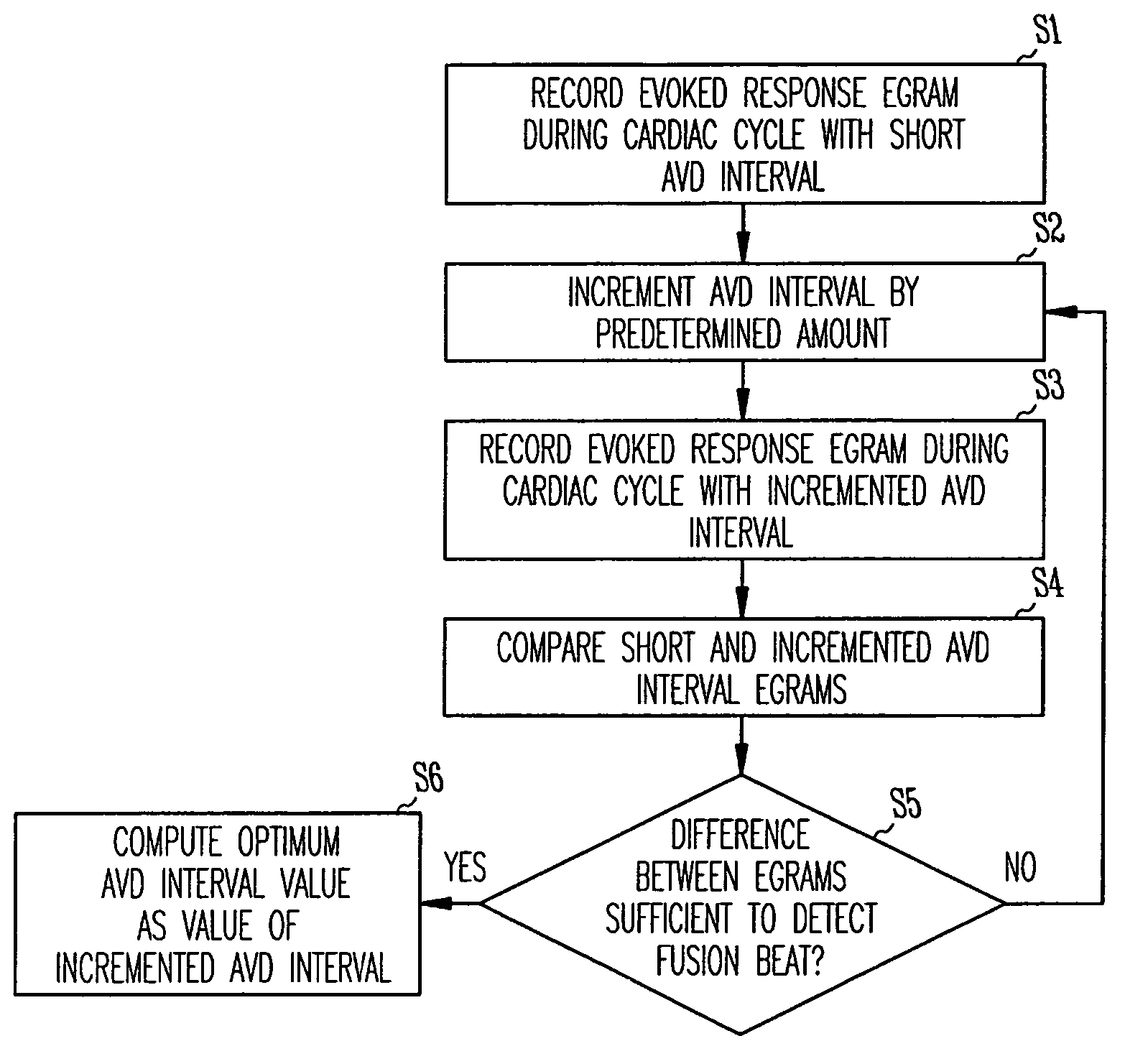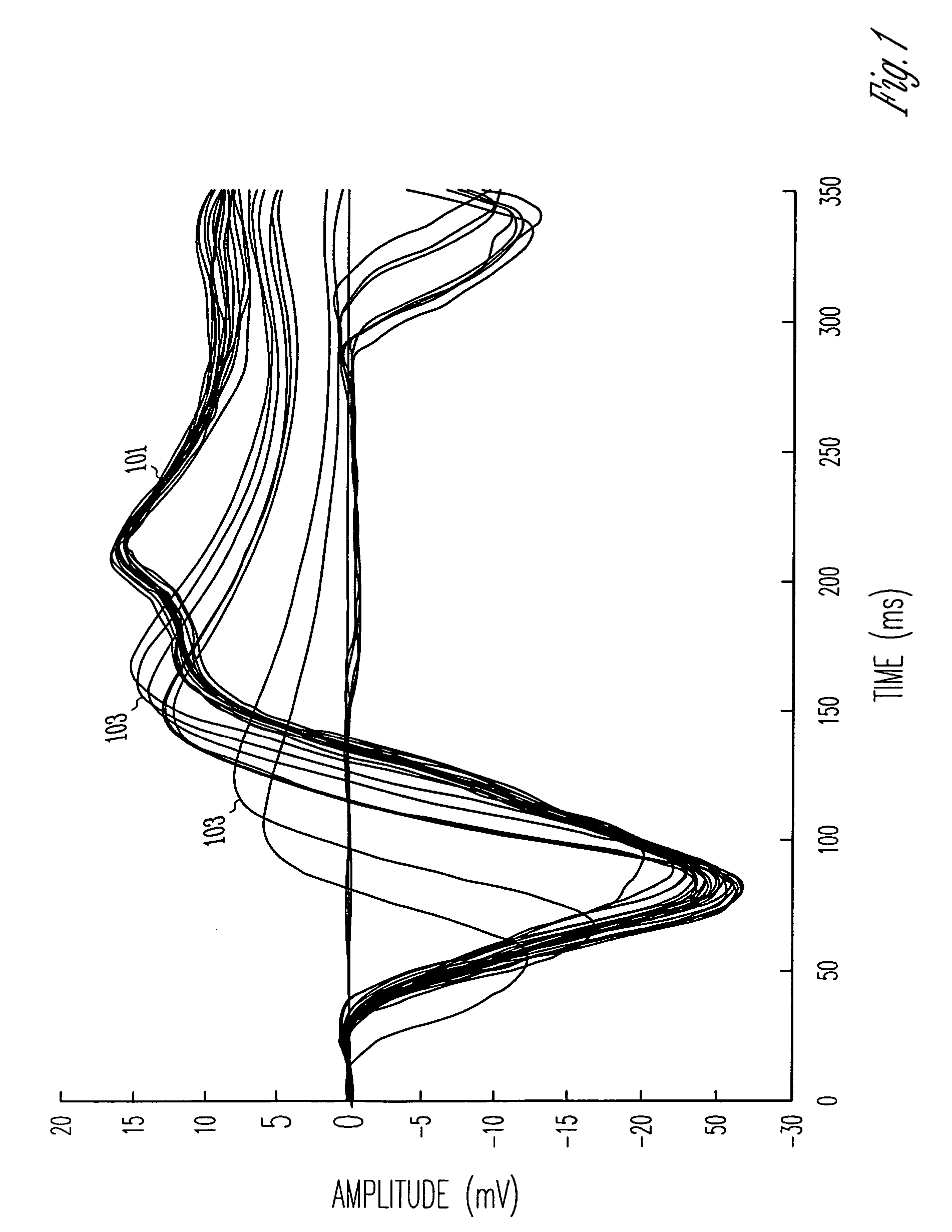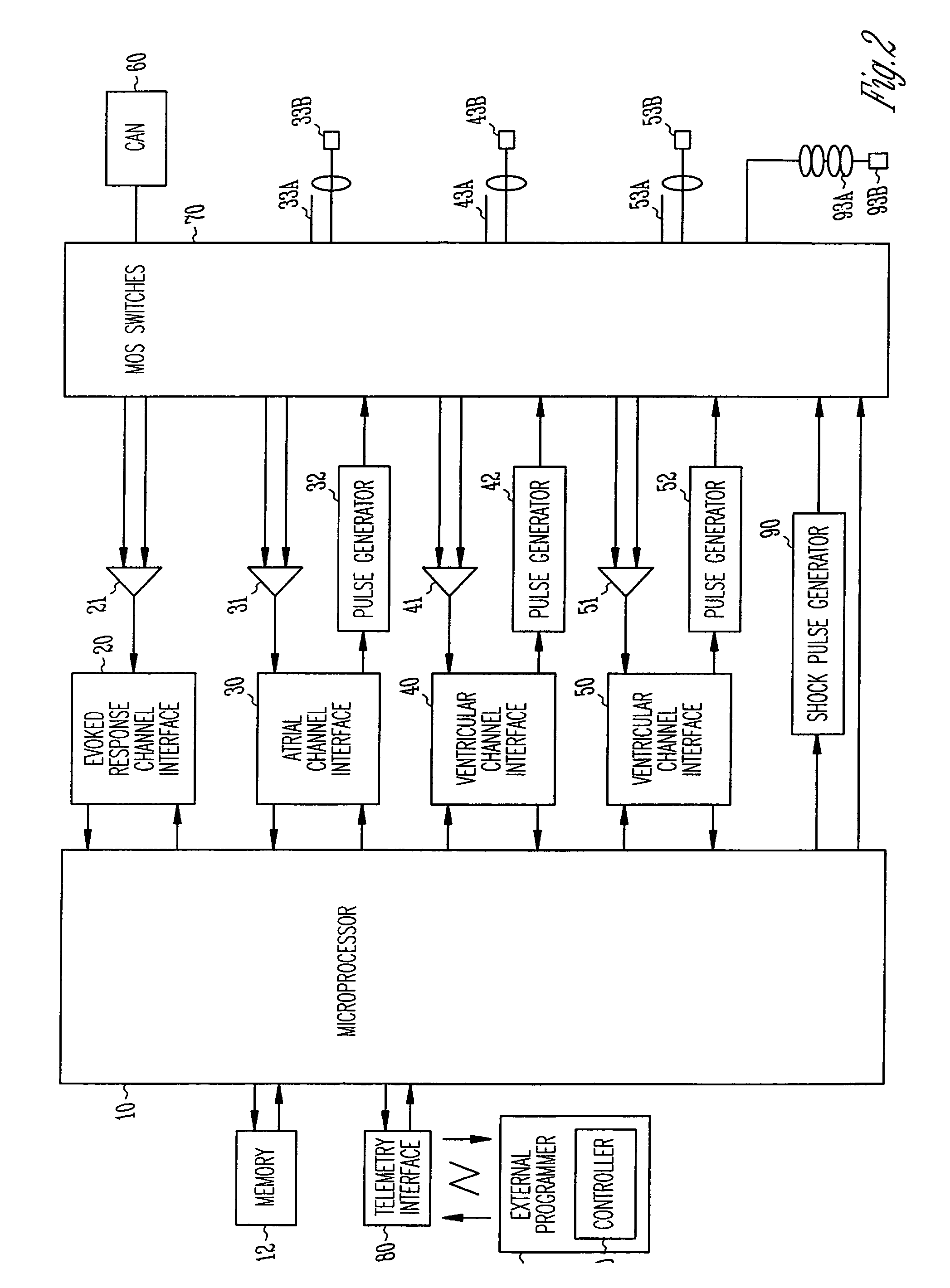Electrogram morphology-based CRT optimization
a morphology and electrophysiology technology, applied in electrotherapy, heart stimulators, therapy, etc., can solve the problems of affecting the effectiveness of cardiac disease treatment, affecting the degree of coordination of atrial and/or ventricular contraction, and greatly reducing the efficiency of heart pumping, etc., to achieve the effect of monitoring the effectiveness of such therapy
- Summary
- Abstract
- Description
- Claims
- Application Information
AI Technical Summary
Benefits of technology
Problems solved by technology
Method used
Image
Examples
Embodiment Construction
[0010]As described above, cardiac resynchronization therapy is pacing stimulation applied to one or more heart chambers in a manner that compensates for conduction delays. Ventricular resynchronization pacing is useful in treating heart failure in patients with interventricular or intraventricular conduction defects because, although not directly inotropic, resynchronization results in a more coordinated contraction of the ventricles with improved pumping efficiency and increased cardiac output. Ventricular resynchronization can be achieved in certain patients by pacing at a single unconventional site, such as the left ventricle instead of the right ventricle in patients with left ventricular conduction defects. Resynchronization pacing may also involve biventricular pacing with the paces to right and left ventricles delivered either simultaneously or sequentially, with the interval between the paces termed the VV delay (VVD) interval (also sometimes referred to as the LV offset (LV...
PUM
 Login to view more
Login to view more Abstract
Description
Claims
Application Information
 Login to view more
Login to view more - R&D Engineer
- R&D Manager
- IP Professional
- Industry Leading Data Capabilities
- Powerful AI technology
- Patent DNA Extraction
Browse by: Latest US Patents, China's latest patents, Technical Efficacy Thesaurus, Application Domain, Technology Topic.
© 2024 PatSnap. All rights reserved.Legal|Privacy policy|Modern Slavery Act Transparency Statement|Sitemap



